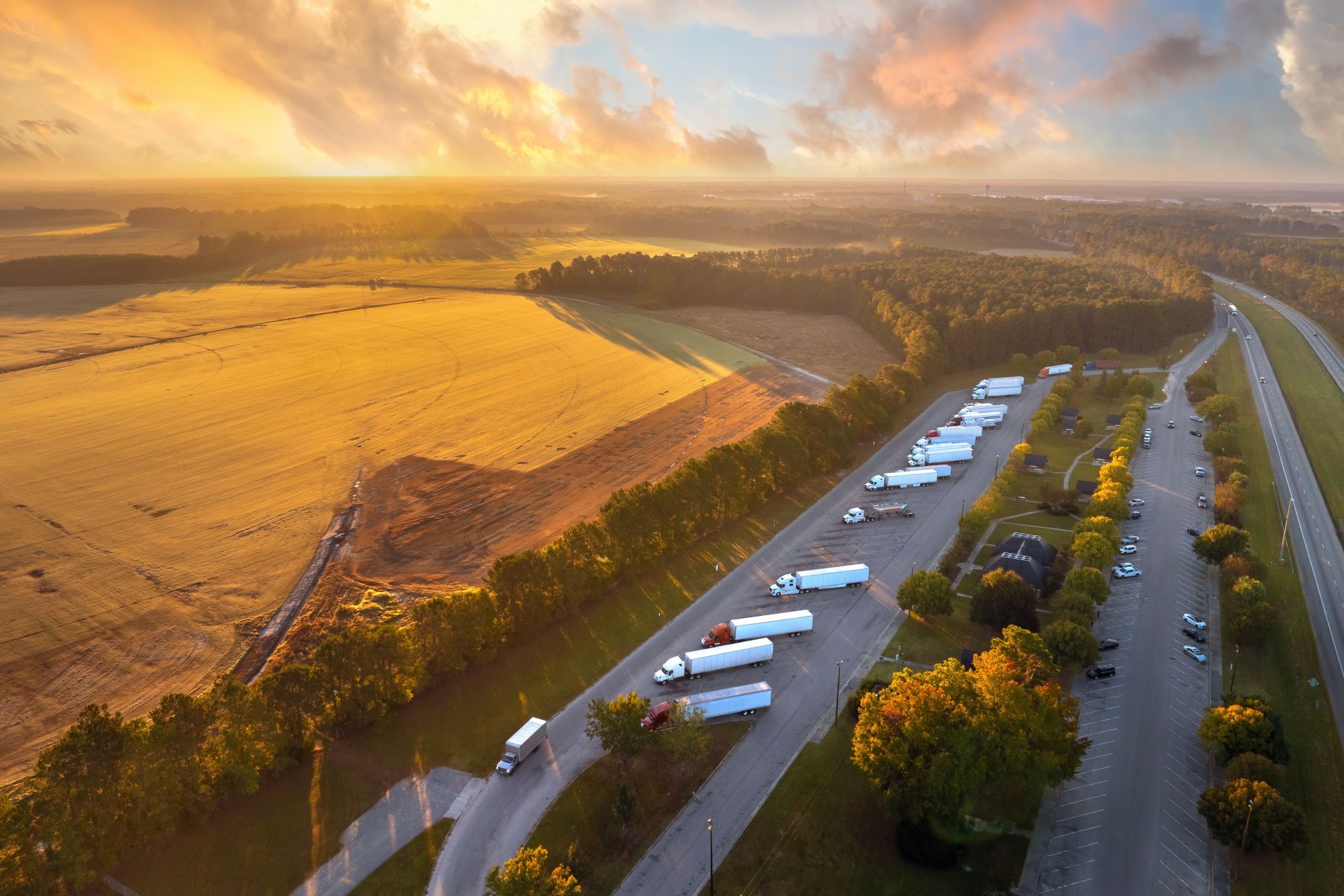
Guest
Kaip tapti sunkvežimio vairuotoju
Sukurta: 26-09-2025
•
Atnaujinta: 26-09-2025
Visoje Europoje profesionalių sunkvežimių vairuotojų paklausa dar niekada nebuvo tokia didelė. Jungtinės Karalystės Kelių transporto asociacijos duomenimis, per ateinančius penkerius metus reikės 200 000 naujų sunkvežimių vairuotojų, kad būtų užtikrintas tiekimo grandinių veikimas. Tokia pati padėtis yra ir didžiojoje Europos dalyje. Remiantis ITarptautinės kelių transporto sąjungos duomenimis, 2024 m. visoje Europoje buvo 426 000 neužpildytų vairuotojų darbo vietų.
Tačiau tai suteikia galimybę. Kaip jau anksčiau tyrinėjome (https://snapacc.com/newsroom/is-logistics-a-new-alternative-to-further-education-for-school-leavers/), krovinių gabenimo pramonė suteikia nuolatinio darbo perspektyvą abiturientams, svarstantiems apie alternatyvą universitetui, ir suaugusiesiems, norintiems persikvalifikuoti. Tapti sunkvežimio vairuotoju - tai kelias į užtikrintą uždarbį ir struktūruotą karjerą.
Daugeliui kyla klausimas: kaip tapti sunkvežimio vairuotoju? Atsakymas į šį klausimą priklauso ne tik nuo mokymų ir pažymėjimų, bet ir nuo supratimo, ką reiškia įgyti profesiją, kuri užtikrina Europos ekonomikos judėjimą.
Kas gali tapti sunkvežimio vairuotoju?
Vienas iš pagrindinių vairuotojo karjeros privalumų yra jos prieinamumas. Norint pradėti dirbti, nereikia turėti universitetinio išsilavinimo ar ilgamečio specialaus mokymo; prieš pradedant siekti profesinės kvalifikacijos, tereikia turėti standartinį automobilio vairuotojo pažymėjimą (B kategorija).
Tiek Jungtinėje Karalystėje, tiek visoje ES minimalus amžius, nuo kurio galima mokytis, yra 18 metų, o tai reiškia, kad mokyklą baigę jaunuoliai gali iš karto pereiti nuo automobilio vairuotojo pažymėjimo prie profesionalaus sunkiasvorių sunkvežimių vairuotojo mokymo. Vis dėlto daugelis įmonių pageidauja, kad tarptautinio krovinių vežimo vairuotojams būtų bent 21 metai, nes vežant krovinius dideliais atstumais jiems tenka papildoma atsakomybė.
Taip pat svarbu ir medicininis tinkamumas. Kiekvienas pareiškėjas, norėdamas gauti sunkiasvorės krovininės transporto priemonės vairuotojo pažymėjimą, turi praeiti sveikatos patikrinimą. Jungtinėje Karalystėje atliekami įvairūs testai, įskaitant regėjimo patikrinimą, kraujospūdžio matavimą ir patikrinimą dėl tokių ligų, kaip epilepsija, širdies ligos ar miego apnėja.
Europos šalys taiko tuos pačius ES masto sveikatos standartus, o reguliarus atnaujinimas užtikrina, kad vairuotojai išliktų sveiki visą savo karjerą.
Kiek uždirba sunkvežimio vairuotojas?
Daugeliui žmonių, svarstančių apie profesionalaus vairuotojo profesiją, labiausiai rūpi, kiek uždirba sunkvežimių vairuotojai?
Atsakymas priklauso nuo vietovės, patirties ir atliekamo darbo pobūdžio, tačiau visoje Europoje ši profesija siūlo konkurencingą darbo užmokestį, palyginti su kitais pradinio lygio darbais.
● Naujas vairuotojas Jungtinėje Karalystėje paprastai pradeda dirbti už maždaug 27 000 svarų sterlingų per metus. Tiems, kurie pradeda dirbti tolimojo susisiekimo srityje, ypač tarptautiniais maršrutais, atlyginimas gali išaugti iki 45 000 svarų sterlingų, o kartais ir daugiau, jei veža specializuotus ar pavojingus krovinius. tiems, kurie veža specializuotus krovinius, pavojingus krovinius ar dirba tarptautiniais maršrutais.
● Ispanijoje atlyginimai paprastai yra mažesni nei Jungtinėje Karalystėje, paprastai apie 36 600 eurų, nors didelės logistikos įmonės didžiuosiuose miestuose gali pasiūlyti daugiau.
● Lenkija pastaraisiais metais pastebima didelė vairuotojų paklausa, tačiau darbo užmokestis išlieka kuklus - vidutiniškai apie 92 400 PLN (apie 21 690 EUR).
● Rumunija yra žemesnėje skalės dalyje - vairuotojai paprastai uždirba 80 550 RON (16 000 eurų), nors tarptautinio krovinių vežimo sutartys gali gerokai padidinti atlyginimą į rankas.
Žinoma, darbo užmokestis nėra visa istorija. Daugelis įmonių siūlo viršvalandžius, maistpinigius ar premijas už pasiektus pristatymo tikslus. Kadangi vairuotojų paklausa nemažėja, šis darbas taip pat suteikia tokį saugumo lygį, kokiam gali prilygti nedaugelis kitų pradedančiųjų vairuotojų profesijų.
Kokio sunkvežimio vairuotojo pažymėjimo man reikia?
Prieš sėsdami prie sunkvežimio vairo, turite turėti tinkamą vairuotojo pažymėjimą. Jungtinėje Karalystėje tai reiškia, kad turite ne tik standartinį automobilio vairuotojo pažymėjimą, bet ir oficialiai vadinamą didelių krovininių transporto priemonių (LGV) arba sunkiųjų krovininių transporto priemonių (HGV) vairuotojo pažymėjimą. Šie terminai dažnai vartojami pakaitomis, tačiau abu apima tas pačias profesionalaus vairavimo kategorijas.
Kai kurie žmonės pradeda nuo C1 kategorijos vairuotojo pažymėjimo, kuris išduodamas vidutinio dydžio transporto priemonėms, sveriančioms nuo 3,5 iki 7,5 tonos, dažnai naudojamoms mažesniems pristatymo sunkvežimiams.
Tačiau dauguma pradedančiųjų sunkvežimių vairuotojų iš karto įgyja C kategorijos vairuotojo pažymėjimą, kartais vadinamą 2 klasės sunkiasvorių sunkvežimių vairuotojo pažymėjimu. Tai suteikia teisę vairuoti didesnes nei 7,5 tonos standžias transporto priemones. Norintiems pereiti prie šarnyrinių sunkvežimių, t. y. didesnių transporto priemonių, dažniausiai naudojamų tolimojo susisiekimo ir tarptautiniuose maršrutuose, reikia CE kategorijos (1 klasės) vairuotojo pažymėjimo.
Kartu su šiomis kvalifikacijomis įgyjamas ir vairuotojo profesinės kompetencijos pažymėjimas (CPC), kuris yra teisinis reikalavimas visoje Jungtinėje Karalystėje ir ES. Šį pažymėjimą sudaro pradinis mokymas ir periodiškai atnaujinami kursai, kuriais siekiama, kad vairuotojai nuolat atnaujintų saugos, teisės aktų ir kelių eismo įgūdžių žinias.
Ši sistema atspindi visos ES licencijavimo sistemą. Pagrindiniai skirtumai tarp šalių yra susiję su mokymo paslaugų teikėjais, susijusiomis išlaidomis, o kai kur - ir su galimybe laikyti egzaminus.

Kaip gauti sunkiasvorės krovininės transporto priemonės vairuotojo pažymėjimą
Sunkvežimio vairuotojo pažymėjimo gavimas yra pirmasis žingsnis į profesionalaus vairuotojo kelią. Jungtinėje Karalystėje šį procesą galite pradėti turėdami standartinį B kategorijos automobilio vairuotojo pažymėjimą. Po to kreipiatės dėl laikinojo sunkvežimio vairuotojo pažymėjimo, kuris leidžia pradėti mokytis vairuoti dideles krovinines transporto priemones.
Mokymo metu derinami teoriniai ir praktiniai aspektai: klasėje vyksta užsiėmimai apie kelių eismo saugą ir taisykles, po kurių prižiūrimas vairavimas sunkiasvorėmis transporto priemonėmis. Kandidatai taip pat turi baigti vairuotojo profesinės kompetencijos pažymėjimo (CPC) modulius, kuriais užtikrinama, kad vairuotojai būtų pasirengę ne tik saugiai valdyti transporto priemones, bet ir tvarkytis su kasdieniais krovinių vežimo reikalavimais.
Kiek kainuoja tapti sunkvežimio vairuotoju?
Vienas iš dažniausiai užduodamų klausimų tiems, kurie svarsto apie šią profesiją, - kiek kainuoja sunkvežimio vairuotojo mokymai. Jungtinėje Karalystėje kainos skiriasi priklausomai nuo paslaugų teikėjo, vietovės ir nuo to, ar mokotės C, ar aukštesnės CE kategorijos vairuotojo pažymėjimui gauti. Vidutiniškai nauji vairuotojai gali tikėtis išleisti nuo 2 000 iki 3 500 svarų sterlingų, kad padengtų sveikatos patikrinimus, laikinojo vairuotojo pažymėjimo mokesčius, teorijos egzaminus, praktinį mokymą, CPC modulius ir galutinį vairavimo egzaminą. Kai kurios bendrovės, ypač didesnės logistikos įmonės, siūlo programas, pagal kurias subsidijuojamas arba visiškai finansuojamas mokymas mainais į darbo įsipareigojimus, todėl šis kelias tampa prieinamesnis.
Kitur Europoje skaičiai nėra labai skirtingi. Ispanijoje mokymas paprastai kainuoja nuo 2 000 iki 3 000 eurų už visą mokymą ir sertifikavimą. Lenkijoje ši suma yra mažesnė - vidutiniškai nuo 1 500 iki 2 500 eurų. Rumunijoje mokymo išlaidos yra vienos mažiausių Europoje - daugelis kandidatų už kvalifikacijos įgijimą moka apie 1 000-1 800 eurų, nors pradinio lygio darbo užmokestis paprastai atspindi šį mažesnį barjerą patekti į rinką.
Kiek laiko užtrunka tapti sunkvežimio vairuotoju?
Laikas, per kurį įgyjama sunkvežimio vairuotojo kvalifikacija, priklauso nuo to, kur mokotės, kokio tipo vairuotojo pažymėjimo siekiate ir kaip greitai galite gauti egzaminų datas. Jungtinėje Karalystėje dauguma žmonių baigia mokymus ir išlaiko egzaminus per 2-4 mėnesius. Kai kurie intensyvūs kursai trunka kelias savaites, tačiau daugelis vairuotojų mano, kad geriau įsisavinti įgūdžius padeda pamokų išdėstymas.
Ispanijoje ir Lenkijoje šis procesas panašus, tačiau ilgesnės egzaminų eilės gali pailginti laiką. Lenkijoje dėl didelės profesionalių vairuotojų paklausos mokymo centruose susidarė spūstys, todėl kai kurie kandidatai praktinio egzamino laiko laukia kelis mėnesius. Rumunijoje šis procesas yra vienas iš greičiausių - mokymas ir egzaminavimas dažnai užbaigiamas per aštuonias-dvylika savaičių.
Mokymasis nesibaigia ir gavus vairuotojo pažymėjimą. Kiekvienas profesionalus vairuotojas kas penkerius metus turi baigti 35 valandų trukmės CPC mokymus, kad atnaujintų savo įgūdžius ir būtų pasirengęs laikytis naujausių taisyklių ir saugos standartų.
Kiek laiko gali vairuoti sunkvežimio vairuotojas?
Kai įgyjate kvalifikaciją, darbas susijęs su griežtais apribojimais, kiek laiko galite praleisti prie vairo. Šiais apribojimais siekiama apsaugoti tiek vairuotojus, tiek kitus eismo dalyvius, mažinant nuovargį.
Visoje Jungtinėje Karalystėje ir ES galioja tos pačios taisyklės. Vairuotojai kasdien prie vairo gali praleisti ne daugiau kaip devynias valandas, o du kartus per savaitę šį laiką galima pratęsti iki dešimties valandų. Savaitinis vairavimo laikas negali viršyti 56 valandų, o per dvi savaites iš eilės - 90 valandų.
Be to, po 4,5 valandos vairavimo vairuotojas privalo daryti bent 45 minučių pertrauką. Jie taip pat turi teisę į kasdienį ir kassavaitinį poilsį, kad galėtų atsigauti prieš grįždami į darbą.
Šių taisyklių laikymasis atidžiai stebimas, o transporto priemonėse įrengti tachografai, kuriais fiksuojamos valandos ir užtikrinama, kad jų būtų laikomasi. Dirbantiems tolimojo susisiekimo maršrutais, pavyzdžiui, Ispanijos vairuotojams, vykstantiems į Pirėnų pusiasalį, arba Lenkijos vežėjams, gabenantiems krovinius per rytines ES sienas, šie apribojimai lemia darbo ritmą. Nuo jų priklauso, kada ir kur vairuotojai sustoja, todėl galimybė naudotis saugiomis poilsio vietomis yra labai svarbi darbo dienos dalis.
Kaip pradėti dirbti sunkvežimio vairuotoju
Sunkvežimio vairuotoju tampama ne tik išlaikius egzaminus. Tai - įsitraukimas į darbą, už kurį tenka prisiimti tikrą atsakomybę, bet kuris taip pat suteikia ilgalaikių galimybių. Turint tinkamą vairuotojo pažymėjimą, tinkamus mokymus ir pasiryžimą priimti gyvenimą kelyje, ši karjera gali užtikrinti ir stabilumą, ir tobulėjimą.
SNAP žinome, kaip atrodo tokios kelionės. Todėl dirbame su automobilių parkais ir vairuotojais visoje Europoje, kad kelionės būtų saugesnės, paprastesnės ir patogesnės - nuo saugios automobilių stovėjimo aikštelės ir geresnių gerbūvio sąlygų iki išmaniųjų skaitmeninių įrankių, taupančių laiką ir stresą. Nesvarbu, ar tik pradedate, ar vairuojate jau daugelį metų, mes padėsime jums kiekviename kilometre.
Atsisiųskite programėlę intruck app ir jau šiandien raskite patikimas automobilių stovėjimo aikšteles, įrenginius ir paslaugas, kad ir kur jus nuvestų jūsų maršrutas.



